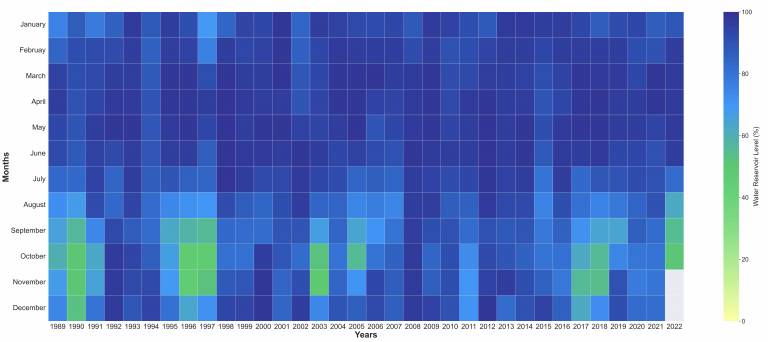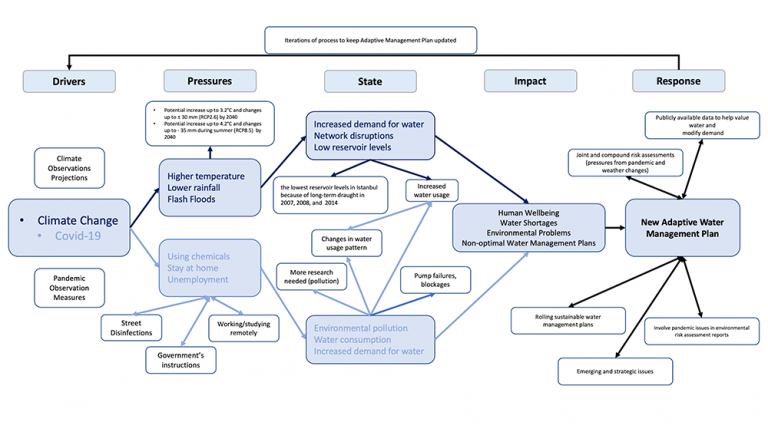Is London ready for upcoming low reservoir levels?
5 December 2022
In order for all of us to be ready for future pressures on water resources, a framework is needed to help people think about water resources from a new perspective that is based on looking to develop adaptive management plans.

Figure 1. Monthly water reservoir levels (% live capacity) in Lower Thames Group (Thames Water via Environment Agency, 2022)
In our recent preprint submitted to UCL Open Environment Journal, we suggested that there are indications in our limited dataset (back to 1989 for London and 2005 for Istanbul) that, effectively, near drought-like conditions leading to the lowest reservoir levels may be impacting London and Istanbul every 6-7 years (this cycle appears in some other reservoir levels and river discharges data as well – as yet unpublished). In Figure 1, the effect is most pronounced in 1990, with not dissimilar data for 1996/97, 2003, 2011 and 2017/18 as well. After the recent declaration of drought across most of England and with very low rainfall in September and October 2022, Lower Thames Group - water reservoir levels seem giving a sign of upcoming low levels in 2023, perhaps 2024. Recent heavy rainfall may make a difference. We shall see…

So, what needs to be done to be ready? In order for all of us to be ready for future pressures on water resources, a framework is needed to help people think about water resources from a new perspective that is based on looking to develop adaptive management plans. In these, there would be a need to (a) provide more publicly available data, (b) assess actual and potential issues with the affected communities and (c) take account of both drivers of long-term trends (such as climate change and demographics) and shorter-term extreme events (such as pandemics or droughts). Our studies suggest a lot of factors need accounting for. Figure 2 relates most closely to Istanbul but may also have relevance to other large conurbations. We hope a DPSIR framework– this underpins Figure 2 - may help major municipalities and their hinterlands develop more sustainable ways of managing water resources and supply in future. It may be that the factors involved are the same for different localities but need to be given different weights to account for differing environmental, social, and economic circumstances.
Links:
- Ferhat Yilmaz's academic profile
- Dr Michel Tsamados' academic profile
- Prof Dan Osborn's academic profile
- Drought risks in Turkey - Istanbul water reservoir levels case study.
 Close
Close

